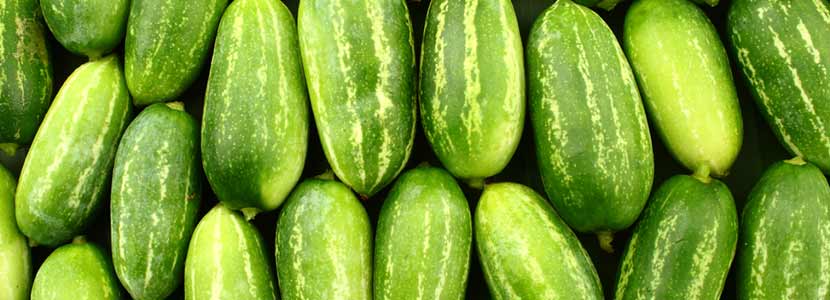The Open Magazine
Delicious Keto Recipes for a healthy lifestyle
Kundru Vegetable Benefits. Did you know that eating kundru vegetables has many unexpected health benefits? Learn about the wonderful nutritional values and benefits of this vegetable now!
Weight loss recipeCan I eat fruits if I’m on a ketone diet? Can we eat Apple on keto diet
Kundru, a seasonal dark green vegetable, is packed with many essential nutrients and vitamins. From aiding in digestion to helping improve the immune system and providing anti-inflammatory benefits, the health benefits of kundru are endless. Read on to find out more about this nutritional powerhouse vegetable and how you can incorporate it into your regular diet.
Overview of Kundru Vegetable:
Kundru is a type of dark green leafy vegetable that belongs to the ivy gourd family. It is low-calorie and related to bitter melon and cucumbers. This perennial climbing vegetable grows in Indian subcontinent, Southeast Asia and southern China. It provides a host of nutritional benefits including vitamins A and C, minerals, dietary fiber, folate, calcium and iron. Furthermore, kundru contains multiple phytonutrients with anti-inflammatory properties as well as antioxidants that can help improve your overall health and wellness.
Not only is kundru a delicious and nutritious vegetable, but it can help improve digestive health due to its high fiber content. Research has found that dietary fiber can help reduce inflammation in the intestines, promote regular bowel movements and lower cholesterol. Additionally, kundru’s vitamin C content helps support your immune system as well as your skin health by reducing the signs of aging. It is also said to aid in weight loss, regulate blood sugar levels, reduce eye fatigue and even improve mental health. Lastly, kundru is also believed to be beneficial for heart health since it contains unsaturated fatty acids that may help protect against coronary artery disease.
Nutritional Benefits of Kundru Veges:
Eating kundru is a great way to increase your nutrient intake and improve your overall health. It is packed with essential minerals, vitamins and dietary fiber, as well as antioxidants that can help strengthen your immune system and reduce inflammation. Kundru also contains folate, which helps produce new cells in the body and may help lower your risk of certain types of cancer. Additionally, the high iron content in kundru helps to prevent anaemia and supports better circulation throughout the body.
Another great thing about kundru is its low glycemic index, which means that it digests slowly and helps to keep your blood sugar stable. Not only does this make it a great food choice for people with diabetes, but it can also help you stay fuller for longer and maintain a healthy weight. Kundru is an especially good source of fiber, which further helps stabilize your digestive system and promote regularity. And finally, its high levels of vitamin B complex boost energy production in the body, allowing you to stay active throughout the day.
Aids Digestion and Good for the Gut:
Eating kundru can also help with digestion, as this vegetable is rich in fiber. The dietary fiber found in kundru aids in digestion by adding bulk to stools, helping to prevent constipation. Furthermore, its anti-inflammatory properties help reduce inflammation of the digestive tract and may even provide relief from irritable bowel syndrome. Kundru also contains prebiotics that stimulates the growth and activity of beneficial bacteria in the gut, promoting better overall health.
Kundru is known to contain essential vitamins, minerals, and amino acids that help support the body’s overall health. Some of its most notable nutritional values include vitamins A, C and K, folate, magnesium, potassium and iron. Additionally, kundru serves as an excellent source of dietary fiber which helps reduce cholesterol levels in the body as well as improve digestive health. The antioxidants found in kundru also contribute to its anti-inflammatory properties and can provide relief from a variety of ailments such as arthritis or even common colds.
Treats Anemia and Builds Immunity:
Kundru is an excellent source of iron, vitamins and other essential minerals, making it a great food for preventing and treating anaemia. Furthermore, this vegetable contains proteins which contribute to the production of antibodies in the body and fights disease-causing bacteria and toxins. Eating kundru increases your immunity, leaving you less prone to illnesses like colds and flu.
Kundru is a nutritional powerhouse that can help strengthen your bones and teeth. Kundru has higher levels of calcium than other leafy green vegetables, making it an excellent source to build strong bones and teeth. The bold colour of kundru indicates the presence of high amounts of anti-oxidants like beta-carotene, lutein and zeaxanthin which have numerous health benefits such as myocardial infarction prevention, anti-ageing and promoting healthy vision.
Improves Metabolism and Keeps Skin Healthy:
Eating kundru can help boost your metabolism. Vegetable is a good source of dietary fiber, helping to promote the absorption of essential minerals and vitamins by the body. This ensures that the digestive system runs smoothly, aiding in better digestion and more efficient nutrient absorption. Kundru is also rich in Vitamin C, which helps to slow down ageing and keep your skin healthy and radiant.
Kundru contains various minerals such as phosphorus, magnesium and manganese, which have various health benefits. Phosphorus helps to build bones and teeth and promotes the balance of fluids and electrolytes in the body. Magnesium helps to reduce inflammation and can improve the symptoms of many chronic conditions, while manganese helps to protect cells from damage and strengthens connective tissues. Kundru is also a good source of Vitamin A, which plays an important role in promoting healthy vision, bones and immune system functioning. Eating kundru regularly can also help to promote weight loss due to its low-calorie content.
